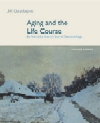1. How do an extended family's living arrangements change in response
to the changing needs of different generations?
As children grow up, they often move away from parents to establish their own
family. Parents, too, may move away from children to a retirement home. As parents
grow ill or disabled, they move closer to their children once again. 2. With whom do most older people live?
Most older people prefer indepen-dent living, and most live in their own homes.
High rates of home ownership among the elderly obscure differences by race and
ethnic origin, with African American and Hispanic elderly being less likely
to own their own homes than whites. Gender also influences living arrangements,
with the majority of older men living with a spouse, but older women being more
likely to live alone. Although in the United States adult children do not typically live with their
parents, most maintain regular and frequent contact with them. These relationships
are important for the parents' physical and mental health. Parents who have
close relationships with their children are less likely to be depressed or lonely.
However, in many other countries children are expected to care for their aging
parents and cultural patterns dictate intergenerational households. 3. What kind of housing do older people have, and what housing problems
do they face?
Although most older people live in sound and affordable housing, some reside
in old homes that need repair or that have environmental barriers that make
them unsafe. A deteriorating living environment can have a negative effect on
physical and mental health. 4. What are the benefits and drawbacks of shared housing, board and
care homes, and assisted living facilities?
The concept of supportive housing refers to a range of alternative living arrangements
that combine housing with long-term care services. Supportive housing arrangements
vary considerably in quality and affordability. Shared housing is an experimental
arrangement that pairs up older people in various settings with others who need
housing. Board and care homes provide a supportive living environment for people
who cannot live on their own. Board and care residents are often poor and sometimes
have developmental disabilities or psychological problems. Assisted living facilities
provide many of the same services as board and care homes, but they cater to
a more affluent clientele. They provide small apartments that include private
baths, recreational facilities, and individualized care. 5. What is a continuing care retirement community, and what is life
in such a community like for an older person?
Continuing care retirement communities provide a continuum of housing alternatives
from independent living to nursing home care. People move into CCRCs to maintain
their independence. Research shows that most residents of most CCRCs adjust
quickly and remain healthier than counterparts who remain in the community. | 


 2002 McGraw-Hill Higher Education
2002 McGraw-Hill Higher Education